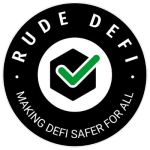The world of Decentralized Finance (DeFi) has introduced a new wave of financial services that are transforming the way we lend, borrow, and interact with money. Traditional finance has long relied on intermediaries—banks, brokers, and institutions—to facilitate lending and borrowing. However, DeFi protocols like Aave and Compound have disrupted this system by creating decentralized platforms that operate without intermediaries, enabling individuals to lend and borrow directly from each other in a trustless and permissionless environment.
In this blog post, we’ll explore the mechanics behind DeFi lending and borrowing protocols, how platforms like Aave and Compound work, and the benefits and risks associated with using these services.
What is DeFi Lending and Borrowing?
DeFi lending and borrowing refer to decentralized platforms that allow users to lend their digital assets in exchange for interest or to borrow digital assets by providing collateral, all without needing a central authority, such as a bank, to facilitate the transaction. These platforms use smart contracts to automate the process, ensuring that both lenders and borrowers are protected, and that interest rates are dynamically set based on supply and demand.
In DeFi, lending involves supplying assets to a liquidity pool, which borrowers can then access. Borrowing, on the other hand, involves locking up collateral (usually in the form of cryptocurrency) to borrow assets from these pools.
Unlike traditional finance, where banks set interest rates and dictate terms, DeFi lending platforms rely on algorithmic protocols that set rates based on real-time market conditions, ensuring that borrowers and lenders both have a stake in the success of the system.
How Do DeFi Lending and Borrowing Protocols Work?
1. Supply and Borrow Assets
At the core of DeFi lending platforms like Aave and Compound are liquidity pools that provide the assets necessary for borrowing. These pools are filled by users who lend their tokens (such as ETH, USDC, DAI, or WBTC) to the protocol in exchange for interest.
When a user deposits their assets into a pool:
- Lenders earn interest on their assets as borrowers pay for access to these funds.
- Borrowers can take out loans by providing collateral in the form of other assets, typically more than the amount they wish to borrow (over-collateralization).
The amount of collateral required varies from platform to platform, but most DeFi lending protocols maintain a collateralization ratio to protect lenders from the risk of default. If a borrower’s collateral falls below the required threshold (due to price volatility), their position is liquidated, and the collateral is sold off to repay the loan.
2. Interest Rates and Dynamic Supply/Demand
Unlike traditional financial products, where interest rates are set by banks or institutions, DeFi lending protocols use an algorithmic model to set interest rates based on the supply and demand for assets within their liquidity pools. If there’s a higher demand for borrowing a particular asset, the interest rate for borrowing that asset rises. Conversely, if there’s more liquidity available than demand, borrowing rates decrease, and lenders may receive higher interest on their deposits.
Platforms like Aave and Compound feature floating interest rates, which can adjust in real time based on market conditions, offering a more flexible approach to lending and borrowing.
3. Collateralization and Risk Management
In most DeFi lending protocols, borrowers must provide collateral that is greater than the amount they wish to borrow. This over-collateralization is a way to protect the protocol and the liquidity providers from default risk. Typically, the collateral-to-loan ratio ranges between 125% to 150%, but it can vary based on the platform and the asset being borrowed.
For example:
- If a user wants to borrow $100 worth of ETH, they may need to deposit $150 worth of DAI as collateral.
- If the value of the collateral decreases below the required collateralization ratio due to market volatility (e.g., ETH drops in price), the protocol will trigger an automatic liquidation to repay the loan and protect the lenders.
This mechanism helps ensure that lending pools remain solvent even if a borrower defaults or the value of their collateral fluctuates dramatically.
Popular DeFi Lending and Borrowing Platforms
Let’s take a closer look at two of the most well-known DeFi lending and borrowing protocols: Aave and Compound.
Aave: A DeFi Lending Pioneer
Aave is one of the leading DeFi lending protocols, and it’s known for offering a wide range of assets for lending and borrowing, including stablecoins, popular cryptocurrencies like Ethereum (ETH) and Bitcoin (WBTC), and even more niche assets.
Key Features of Aave:
- Flash Loans: Aave is particularly famous for its flash loan feature, which allows users to borrow assets without collateral, as long as the loan is paid back within the same transaction. Flash loans are used primarily for arbitrage, refinancing, and complex DeFi strategies.
- Variable and Stable Interest Rates: Aave offers two types of interest rates—variable and stable. The stable rate is designed to protect borrowers from sudden market fluctuations, while the variable rate fluctuates based on supply and demand.
- Overcollateralized Loans: As with most DeFi protocols, Aave requires collateral for borrowing, and the collateralization ratio is typically higher than the amount borrowed.
Aave has gained popularity for its robust and flexible features, and it continues to innovate in the space by introducing new tokens and unique options for both lenders and borrowers.
Compound: Decentralized Lending at Scale
Compound is another leading protocol in the DeFi space, known for being one of the first to bring decentralized lending to the Ethereum blockchain. With Compound, users can deposit assets into liquidity pools, earn interest on their deposits, and borrow against their assets.
Key Features of Compound:
- Compound Governance: Unlike Aave, which uses a more traditional governance structure, Compound features a fully decentralized governance system through COMP tokens. COMP token holders have the ability to vote on proposals and decisions that affect the protocol’s future, creating a more decentralized decision-making process.
- Interest Rate Models: Compound uses an algorithmic model to determine interest rates. As liquidity for a given asset increases, the interest rate for borrowing decreases, and vice versa.
- cTokens: When users deposit assets into Compound, they receive cTokens (such as cDAI, cUSDC, or cETH), which represent their stake in the liquidity pool. These cTokens accrue interest over time, which can then be redeemed for the underlying asset plus interest.
Compound’s focus on simplicity, scalability, and decentralized governance has made it a trusted platform in the DeFi ecosystem, attracting users seeking a more straightforward lending and borrowing experience.
Benefits of DeFi Lending and Borrowing
- Permissionless Access: DeFi protocols are open to anyone with an internet connection, removing barriers such as credit scores, geographic location, or financial institution approval.
- Earning Passive Income: Lenders can earn interest on their crypto assets by providing liquidity to pools, allowing them to generate passive income from their holdings.
- Transparency: All transactions on DeFi platforms are executed on blockchain networks, providing full transparency and immutability.
- Control and Custody: Users retain control of their funds at all times, as there are no middlemen or centralized institutions holding assets.
Risks to Consider
- Smart Contract Vulnerabilities: DeFi platforms rely on smart contracts, which, while secure, are not immune to bugs or exploits. A bug in the code could lead to the loss of funds or a hack.
- Collateral Liquidation: Due to the volatile nature of crypto prices, there is a risk that borrowers may face liquidation if their collateral falls below the required ratio.
- Regulatory Uncertainty: As DeFi continues to grow, regulatory bodies around the world are scrutinizing the space. The future of DeFi lending and borrowing could be affected by potential regulation or legal challenges.
Conclusion
DeFi lending and borrowing platforms like Aave and Compound are revolutionizing the way we think about finance. They provide an open, decentralized, and transparent way for individuals to lend and borrow assets, cutting out the middlemen and offering new opportunities for passive income and financial freedom.
While there are risks involved—especially in terms of smart contract vulnerabilities and market volatility—the benefits of participating in these decentralized ecosystems are undeniable. As the space continues to evolve, it’s clear that DeFi lending and borrowing will play an increasingly important role in the future of finance.
Whether you’re a lender looking for passive income or a borrower in need of liquidity, exploring DeFi protocols can offer exciting opportunities, but always remember to do your own research (DYOR) and understand the risks before diving in.




